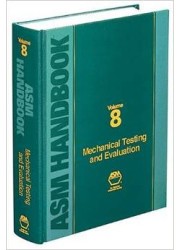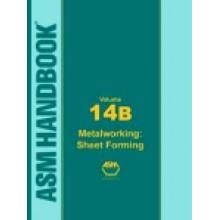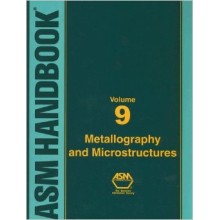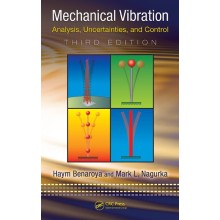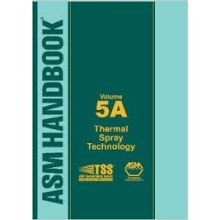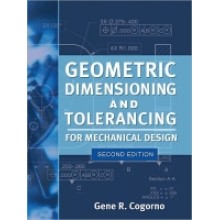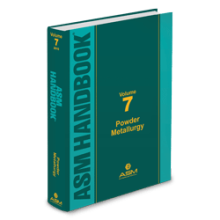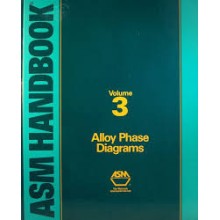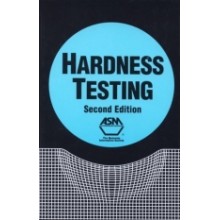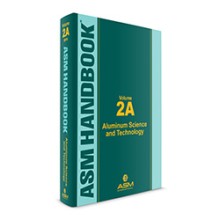ASM Handbook Volume 08 : Mechanical Testing and Evaluation
ISBN: 9780871703897
Author: Howard Kuhn and Dana Medlin
Dispatch Time: 2 - 3 Days
Our Price: $323.00
Discount : 15%
Quantity:
-
Add to Compare
Complete new revision of ASM's standard reference book on the mechanical characteristics and testing of metals, plastics, ceramics, and composites.
KEY FEATURES: Describes the basics of mechanical behavior with in-depth coverage on testing methods for metals, plastics, ceramics and composites. Articles describe the purpose, equipment, fixturing, data evaluation, and typical applications for standard and emerging mechanical tests. Comparative mechanical properties and the mechanical characteristics of metals, plastics, and ceramics are included throughout for general reference. Updated references to ISO, ASTM, DIN, EN, JIS and other standards are also included throughout for metals, plastics, ceramics, and composites.
DESCRIPTION: This newly revised and comprehensive ASM Handbook contains over 50 all-new articles plus newly revised updates on standard test methods for tensile, compressive, shear, hardness, creep, fatigue, and fracture-toughness properties. Expanded coverage also includes new articles on surface wear testing, adhesion testing, nanomechanical testing, Hopkinson bar techniques, dynamic indentation testing, fatigue testing, residual-stress measurements, and extensive new coverage on the mechanical testing of engineering components such as gears, bearings, fasteners, adhesive-bonded joints, piping, and welds.
MARKET/AUDIENCE: All engineers and technical professionals who are involved in the mechanical testing and evaluation of metallic and nonmetallic materials.
Foreword
Policy on Units of Measure
Preface
Authors and Contributors
Reviewers
Section 1 : Introduction to Mechanical Testing and Evaluation
Introduction to The Mechanical Behavior of Metals
Introduction to The Mechanical Behavior of Nonmetallic Materials
Mechanical Testing of Polymers and Ceramics
Overview of Mechanical Properties and Testing for Design
Mechanical Testing for Metalworking Processes
Testing Machines and Strain Sensors
Accreditation of Mechanical Testing Laboratories
Section 2 : Tension, Compression, Bend, and Shear Testing
Mechanical Behavior Under Tensile and Compressive Loads
Stress-Strain Behavior in Bending
Fundamental Aspects of Torsional Loading
Uniaxial Tension Testing
Uniaxial Compression Testing
Hot Tension and Compression Testing
Tension and Compression Testing at Low Temperatures
Bend testing
Shear, Torsion, and Multiaxial Testing
Section 3 : Hardness Testing
Introduction to Hardness Testing
Macroindentation Hardness Testing
Microindentation Hardness Testing
Instrumented Indentation Testing
Indentation Hardness Testing of Ceramics
Miscellaneous Hardness Tests
Selection and Industrial Applications of Hardness Tests
Gage Repeatability and Reproducibility in Hardness Testing
Hardness Conversion for Steels
Section 4 : Friction, Wear, and Surface Testing
Introduction to Adhesion, Friction, and Wear Testing
Adhesion Testing
Testing Methods for Solid Friction
Scratch Testing
Abrasive Wear Testing
Solid Particle Erosive Wear Testing
Sliding Contact Damage Testing
Section 5 : Creep and Stress-Relaxation Testing
Introduction to Creep and Stress-Relaxation Testing
Creep Deformation of Metals, Polymers, Ceramics, and Composites
Creep and Creep-Rupture Testing
Assessment and Use of Creep-Rupture Properties
Stress Relaxation Testing
Influence of Multiaxial Stresses on Creep and Creep Rupture of Tubular Components
Superplastic Deformation at Elevated Temperatures
Section 6 : High-Strain Rate Testing
Introduction to High Strain Rate Testing
High Strain Rate Tension and Compression Tests
High Strain Rate Shear Testing
Classic Split-Hopkinson Pressure Bar Testing
Recovery Hopkinson Pressure Bar Techniques
Split-Hopkinson Pressure Bar Testing of Soft Materials
Split-Hopkinson Pressure Bar Testing of Ceramics
Torsional Kolsky Bar Testing
Triaxial Hopkinson Techniques
Dynamic Indentation Testing
Shock Wave Testing of Ductile Materials
Low Velocity Impact Testing
Section 7 : Impact Toughness Testing and Fracture Mechanics
Fracture Toughness and Fracture Mechanics
Fracture Toughness Testing
Creep Crack Growth Testing
Impact Toughness Testing
Evaluation of Environmentally Assisted Crack Growth
Fracture Resistance Testing of Plastics
Fracture Toughness of Ceramics and Ceramic Matrix Composites
Fracture Resistance Testing of Brittle Solids
Section 8 : Fatigue Testing
Fatigue and Fracture Mechanism
Fatigue, Creep Fatigue, and Thermomechanical Fatigue Life Testing
Ultrasonic Fatigue Testing
Fretting Fatigue Testing
Fatigue Crack Growth Testing
Fatigue Testing and Behavior of Plastics
Fatigue Testing of Brittle Solids
Multiaxial Fatigue Testing
Section 9 : Component Testing
Introduction to Mechanical Testing of Components
Testing for Deformation Modeling
Mechanical Testing of Threaded Fasteners and Bolted Joints
Testing of Adhesive Joints
Mechanical Testing of Welded Joints
Testing of Bearings
Mechanical Testing of Gears
Testing of Pressure Vessels, Piping, and Tubing
Residual Stress Measurements
Mechanical Testing of Fiber Reinforced Composites
Section 10 : Reference Information
Property Comparison Tables : Hardness and Tensile Properties
Glossary of Terms
Metric Conversion Guide
Abbreviations and Symbols
Index
Write a review
Your Name:Your Review: Note: HTML is not translated!
Rating: Bad Good
Enter the code in the box below:
Copyright © 2014 Engineering Standards Bureau. All Rights Reserved.
Developed By Zoom Into Web


